Roles in Constructivist Learning Environments
by Brooke Urbina - Student


1. Teacher Role
1.1. Present and encourage "multiple perspectives and representations of concepts and content" (Pail, 2013, p. 39).
1.2. "Teachers serve in the role of guides, monitors, coaches, tutors and facilitators"(Pail, 2013, p. 39).
1.3. Provide "activities, opportunities, tools and environments...to encourage meta-cognition, self-analysis, -regulation, -reflection, and -awareness" (Pail, 2013, p. 39).
1.3.1. Provide "learning situations, environments, skills, content and tasks [that] are relevant, realistic, authentic and represent the natural complexities of the 'real world'" (Pail, 2013, p. 39).
1.4. Provide "learning situations, environments, skills, content and tasks [that] are relevant, realistic, authentic and represent the natural complexities of the 'real world'" (Pail, 2013, p. 39).
1.5. Provide access to "primary sources of data...in order to ensure authenticity and real world complexity" (Pail, 2013, p. 40).
1.6. Emphasize "knowledge construction not reproduction" (Pail, 2013, p. 40).
1.7. Emphasize "problem-solving, higher-order thinking skills and deep understanding" (Pail, 2013, p. 40).
1.8. Provide opportunity for apprenticeship learning in which there is an increasing complexity of tasks, skills and knowledge acquisition" (Pail, 2013, p. 40).
1.9. Provide opportunities for "knowledge complexity [to be] reflected in an emphasis on conceptual interrelatedness and interdisciplinary learning" (Pail, 2013, p. 40).
1.10. Understand that "collaborative and cooperative learning are favored in order to expose the learner to alternative viewpoints" (Pail, 2013, p. 40).
1.11. Facilitate scaffolding "to help students perform just beyond the limits of their ability" (Pail, 2013, p. 40).
1.12. Create authentic assessment interwoven with teaching (Pail, 2013, p. 40).
2. Student Role
2.1. With the teacher, set goals and objectives (Pail, 2013, p. 39).
2.2. "...play central role in mediating and controlling learning" (Pail, 2013, p. 39).
2.3. Consider previous knowledge and constructions, beliefs and attitudes (Pail, 2013, p. 39).
2.4. Construct knowledge in individual contexts and "through social negotiation, collaboration and experience" (Pail, 2013, p. 39).
2.5. Recognize errors as opportunities for insight into previous knowledge (Pail, 2013, p. 39).
2.6. "..seek knowledge independently and ...manage the pursuit of...goals" through exploration (Pail, 2013, p. 39).
3. Scaffolding
3.1. "...a more knowledgable peer or adult supports the learner in constructing knowledge, until the learner no longer needs this support" (Harasim, 2017, p. 73).
3.2. "...refers to specialized teaching strategies or tools designed to support learning when students are first introduced to a new subject" (Harasim, 2017, p. 73).
3.3. "...gives students a context, motivation and foundation from which to understand the new information" (Harasim, 2017, p. 73).
3.4. "...scaffolds should be gradually removed as the learner progresses, so that students will eventually be able to demonstrate comprehension independently" (Harasim, 2017, p. 73).
3.5. "...scaffolding is not instruction but a form of collaboration between the teacher and the learner as part of the process of learning" (Harasim, 2017, p. 74).
3.6. Vygotsky's Zone of Proximal Development
3.6.1. In the Zone of Proximal Development, Vygotsky believed this is where the job of the teacher was imperative, for here, "Performance [is] assisted by [the] teacher, parent or more capable peer" (Harasim, 2017, p. 69)
